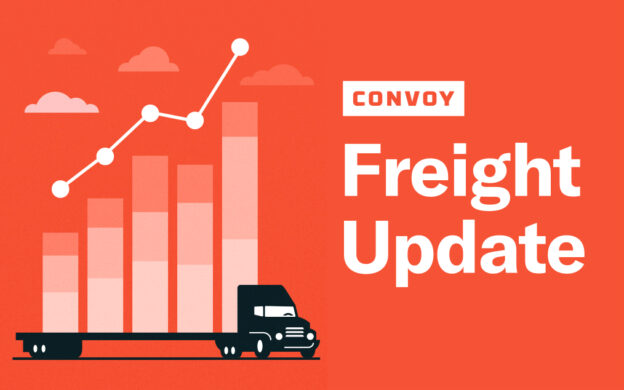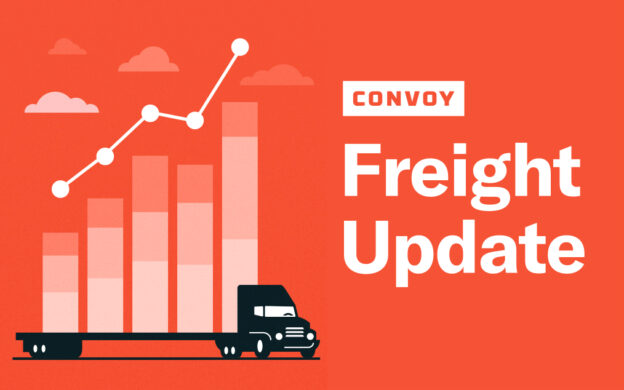Data Deep Dive: Trucking Employment is Probably Back at Pre-Crisis Levels
Freight Research • Published on September 3, 2021
It’s been a while since weeks felt like months, but once again it’s hard not to feel like recent headlines render today’s Jobs Report a relic from a bygone past. The Bureau of Labor Statistics’ Current Employment Situation report, released this morning, provides a snapshot of the U.S. labor market in mid-August. Since then, an advancing wave of Delta variant infections and back-to-back storms on the Eastern Seaboard have materially shifted the economic landscape.
Trucking firms added 5,400 workers to their payrolls in August (seasonally adjusted) according to the BLS data, building upon July’s 4,800 job gain and June’s 6,300 job gains after stagnating head counts for much of the first half of 2021. Though hiring has been strong through the summer, trucking industry employment is still down 1.6 percent relative to January 2020, before the start of the pandemic. Not-seasonally adjusted trucking payrolls are now 1.5 percent above pre-pandemic levels. Courier and messenger services (known as “last-mile delivery” in the freight industry) added a seasonally adjusted 20,000 workers — though this likely reflected earlier than normal hiring for what is anticipated to be a busy online holiday shopping season.
For an industry that has faced record demand over the past year and that has been aggressively increasing wages, head counts have been stubbornly slow to rebound in the BLS data despite recent signs of progress.
There are many familiar explanations for this conundrum — most convincingly, robust competition for workers from other industries and regulatory/educational barriers to entry. These challenges are very real and have been extensively documented. But it’s also possible that the data could simply be painting an incomplete picture of the trucking labor market. There is some emerging evidence to support this idea too.
As we have noted previously, the monthly BLS employment report is composed of two data sets: A survey of employers commonly known as the “Establishment Survey”, and a general population survey known as the “Household Survey”.
The Establishment Survey is generally viewed as the more authoritative pulse on the labor market, but for assessing the state of the trucking industry, it is particularly problematic. It excludes important trucker subgroups such as self-employed Owner Operators and many private fleet drivers (i.e., truckers who work for companies whose core business is not trucking or transportation) and it includes back office and support workers at trucking companies. The Household Survey data tends to be more volatile since it is based on a relatively small population sample, but allows us to more narrowly analyze workers who spend their day driving a truck.
After controlling for these conceptual differences and seasonally adjusting, the Establishment Survey data show head counts at trucking firms are still below pre-pandemic levels, while the Household Survey data suggest that trucking industry employment has fully recovered and is now essentially on par with where it was in January 2020. This is true for self-employed Owner Operators, company drivers, and for back office/support workers at trucking companies.
What explains the discrepancy? Most likely it has to do with technical differences in how the two surveys are sampled, and how each defines “employment”.
First, the Establishment Survey assesses changes in employment at existing firms. The sample frame of companies surveyed is updated once per year, which means that new firms are underrepresented in the survey. Census Bureau research has documented how the Establishment Survey can undercount payroll growth when that growth is dominated by newly incorporated firms.
I suspect that this is the single most important reason for the trucking industry employment gap between the Establishment and Household Surveys. Data from the Federal Motor Carrier Safety Administration (FMCSA), which requires that trucking companies operating commercial vehicles across state lines register, confirm growth in the number of new trucking companies in recent months.
Second, the Establishment Survey counts “jobs” while the Household Survey counts “workers”; individuals with multiple jobs are counted multiple times and individuals between jobs (e.g., who have left a prior job and have their next job lined up) are excluded from the Establishment Survey. In a period of elevated labor market churn, multiple job holding declines and employment gaps increase — both of which should skew the Establishment Survey numbers lower.
All this is to say, in volatile economic periods like the present, the Household Survey probably provides a more complete and timely window into the state of the trucking labor market (despite the fact that Household Survey data are released several weeks after the Establishment Survey data). These technical details are deep in the data weeds, but can have conclusion-shifting consequences for our read on the state of the trucking labor market.
View our economic commentary disclaimer here.


